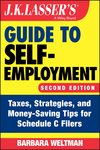Answered: June 10, 2014 8:30 am
Is income averaging still available?
Income averaging for all taxpayers was a way to effectively lower the tax rate on this year’s income by spreading it over a number of prior (lower-income) years to find an average tax rate for it. The general 4-year income averaging rule expired in 1986. Currently, income averaging can only be used by farmers and fishermen for their business income and, in some cases, for lump-sum retirement plan distributions.
Deferred compensation
A portion of earnings withheld by an employer or put into a retirement plan for distribution to the employee at a later date. If certain legal requirements are met, the deferred amount is not taxable until actually paid, for example, after retirement.



